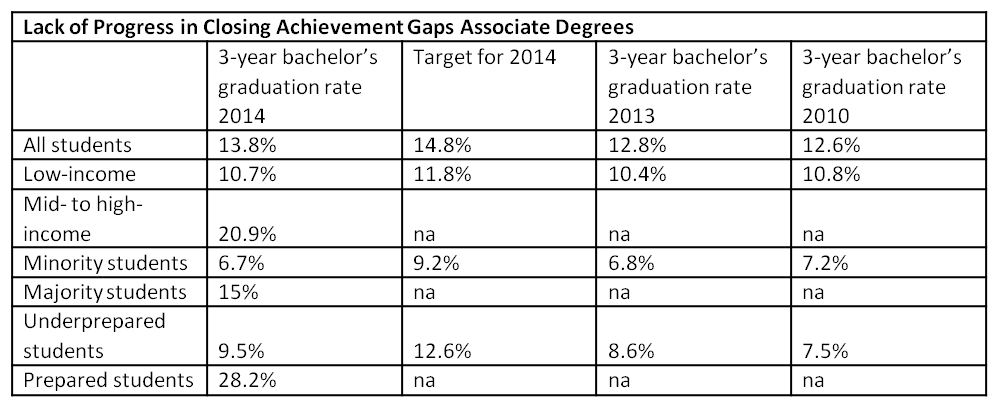The Council on Postsecondary Education’s latest accountability report, which was released yesterday, shows Kentucky has continued to make little to no progress on some important higher education measures. While the state has increased the number of degrees and credentials earned each year since the baseline year, achievement gaps remain for low-income, underrepresented minority and academically underprepared students.
Here are some highlights from the report, which focuses on progress made in 2013-2014 toward meeting the goals set out in the state’s 2011-2015 Strategic Agenda for Postsecondary and Adult Education.
Increase in total degrees and credentials conferred
Between 2010 and 2014 the total degrees and credentials conferred at Kentucky’s public and independent institutions grew from 55,107 to 65,481. The number of bachelor’s degrees and associate degrees have also gone up. These increases are good for Kentucky overall as we seek to develop a more educated and skilled workforce.
Little to no progress in graduation rates for low-income, underrepresented minority and academically underprepared students
Increases in graduation rates for all students have been modest, but of particular concern is the state’s overall lack of progress in addressing the gaps in graduation rates for low-income, underrepresented minority and academically underprepared students — as seen in the tables below.
With six-year bachelor’s degree graduation rates, academically underprepared students have lost ground and the gains for low-income and underrepresented minority students are modest and below the targets set by the state.
Source: Kentucky Council on Postsecondary Education’s 2013-14 Accountability Report. The baseline year is 2010 for the state’s overall bachelor’s graduation rate but 2011 for the graduation rate for low-income students and 2009 for minority students and underprepared students.
In terms of three-year associate graduation rates, there was no improvement for low-income students and minority students have actually experienced a decline. While there was an increase in associate degree graduation for academically underprepared students, the state is still below its target on this measure.
Source: Kentucky Council on Postsecondary Education’s 2013-14 Accountability Report.
Context of state budget cuts
Certainly the state’s budget cuts to higher educational institutions play an important role in the state’s lack of progress in addressing achievement gaps, and the accountability report itself notes the declines in state funding and in the state’s ability to assist qualified low-income students with need-based aid.
As we’ve described previously, Kentucky is among the worst in the country for per-student cuts in public higher education. These cuts, which have led to tuition hikes and reductions in student services, are having the biggest impact on low-income and minority students. Greater state investment in higher education in Kentucky is part of the formula to make much-needed progress in addressing achievement gaps.





